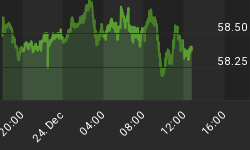Article originally submitted to subscribers on 22nd March 2007...
Come and see the ancient metal of Kings at work!

Chart 1- Aussie Gold (top) vs. Aussie Dollar (bottom) - 18-month time lag
The above chart shows why Central Bankers the world over are fearful of Gold.
Gold in Australian Dollars has lead the Australian Dollar by a full 1 to 1½ years.
- Aussie Gold bottomed towards the middle of 1999. The Australian Dollar bottomed at the beginning of 2001 (1st green line);
- Aussie Gold topped out in late 2002. The Aussie Dollar 2004 (2nd green line);
Now, what's this?
- Aussie Gold began its most recent upleg in late 2005. Last week, the Aussie Dollar moved above resistance at 80c (3rd green line).
What does it mean? And why the time lags?
Gold not only knows the truth behind Central Bank sponsored inflation (debasement), but insists on broadcasting the message for all to see.
Money Supply in Australia (as measured by M3) has been growing at a year over year rate of 13%. Gold's response has been swift and clear.
The effect on the real economy is less obvious.
Money supply takes time to filter through the system. It is never guaranteed where the fresh money will flow. However, the more money that flows into consumer prices and wages, the more obvious inflation becomes to the public. In order to combat inflationary expectations, Central Bankers are forced to raise interest rates (1 to 1½ years after the initial growth in the money supply).
Right now the futures market is pricing in a 51% chance that the Australian Reserve Bank will raise short-term interest rates in April. Inflation, it seems, has arrived at Australia's shores!
Raising interest rates in a debt laden economy (of which Australia is one) is going to hurt. But raising interest rates in a debt laden economy and in the face of a potential global slowdown is downright dangerous.
Here's what happened to the Australian Stock Market the last time the Aussie Dollar breached major resistance:

Chart 2 - Aus All Ords (top); Aussie Dollar (bottom)
Higher interest rates pushed the Aussie Dollar above previous resistance (red arrow) but also negatively impacted stocks (blue rectangle).
Contrast this with the US Fed who says inflationary pressures remain a concern but there is little potential to raise rates because of the fragile housing market. [The Australian real estate market by contrast could probably handle a rate increase].
The stage is therefore set for stagflation with growth moderating and inflation increasing. Perhaps that's why the Ancient Metal of Kings has defied all naysayer and continues to tip-toe (silently) higher.
More commentary and stock picks follow for subscribers...
















